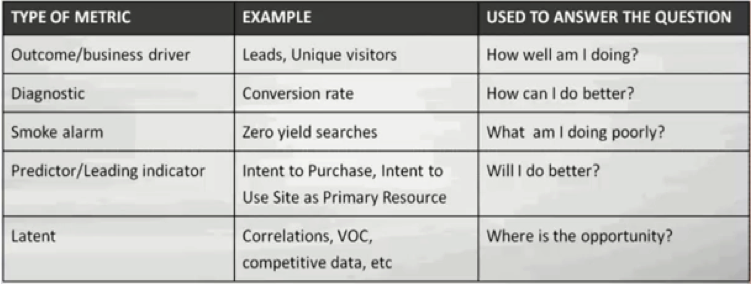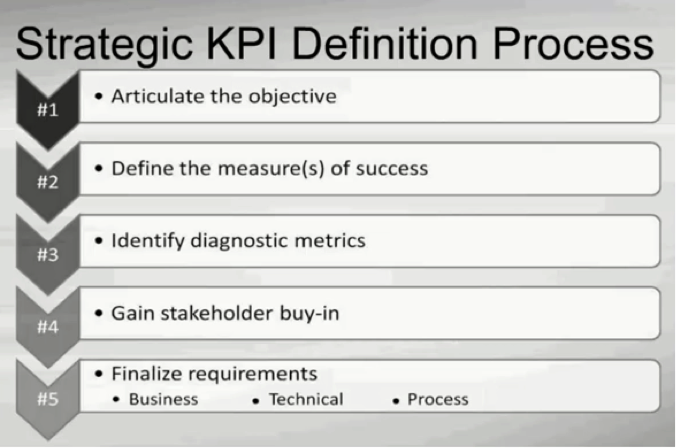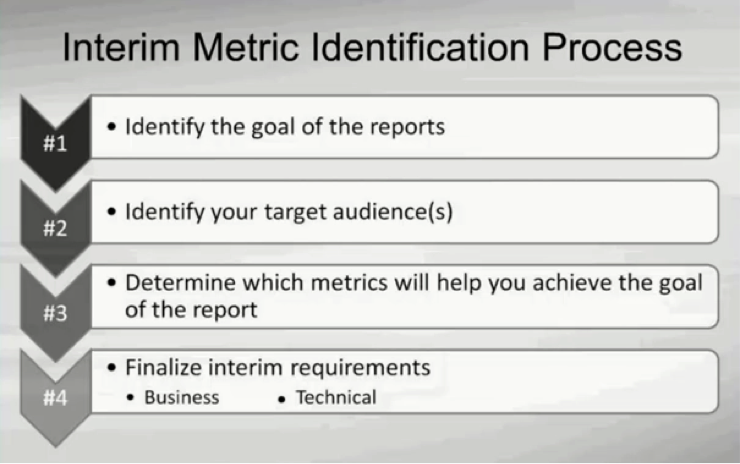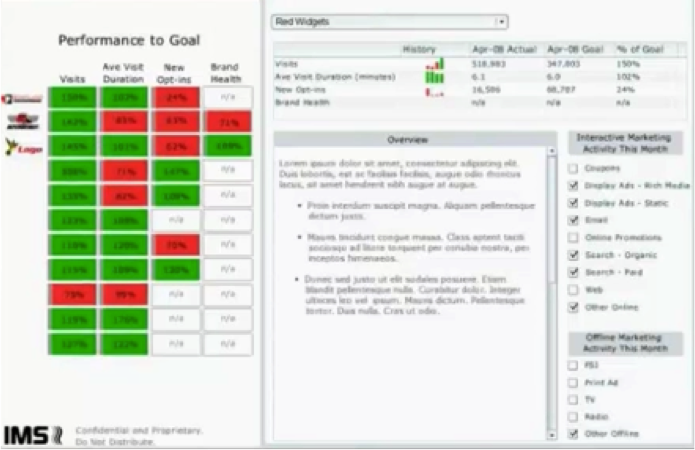In this blog, I will reveal five lessons learned from the course, “Defining Key Performance Indicators (KPIs).” According to the instructor Bill Bruno, CEO of Stratigent, there are many metrics that are important to track, but only a few are KPIs. A metric is a KPI if it meets two criteria: it is tied directly to a business, marketing, or campaign objective; and there are time-sensitive targets that can be measured and rated.
1. Useful KPIs Trump Actionable KPIs
How do you determine which KPIs are the most important? This chart shows that the most useful KPIs provide a high amount of insight and have a short-term impact. In contrast, it’s better to avoid KPIs that are low on the insight and actionable scale.

For example, below are long-term vs. short-term insightful goals:
- Long-term: “Create a fully customized unique experience for my visitors.”
- Short-term: “Start by monitoring the number of people who come from our partner site and see how they interact on our site, in order to create a unique experience for subset groups of visitors.”
What KPIs do you use to measure your marketing campaign performance? It’s important to keep this framework in mind when defining KPIs.
Related Class: Defining Key Performance Indicators
2. Metric Types Classified by Use
In terms of metric types, the chart below indicates five types of metrics and examples of each. These help to answer questions such as: How well am I doing? How can I do better? What am I doing poorly? Will I do better? Where is the opportunity?
In addition, while some metrics inform your short-term tactics (Key Performance Indicators), others inform your long-term strategies (Provide Keen Insight). Bill recommends a balance of metrics across all of these levels. What type of metrics do you use in your organization?
3. Strategic KPI Definition Process
KPI identification typically involves a three-step process: get clarity and consensus on website goals; align your web analytics and website goals; and identify what is important to measure. The framework below illustrates five steps in defining strategic KPIs.
It includes the following: articulate the objective; define the measures of success; identify diagnostic metrics; gain stakeholder buy-in; and finalize business, technical, and process requirements.
4. Interim Metric Identification Process
However, more commonly in organizations, the three-step process is executed backwards: identify what is important to measure; align your web analytics and website goals; and get clarity and consensus on website goals. While this isn’t the ideal process, below is the suggested framework for organizations that use the backwards process.
This process includes: identify report goals; identify your target audiences; determine which metrics help to achieve the report goals; and finalize business and technical interim requirements. What approach do you use for developing KPIs?
5. Global KPIs for Complex Businesses
For complex global businesses, it is important to look for commonalities; remember that no KPI is an island; look for overarching objectives; and use targets/goals rather than raw numbers. Below is a great representation of a KPI dashboard.
It covers performance goals by business; overview section with basic analysis; different activity markers; and metrics that are important to the business (visits, average visit duration, opt-ins, and brand health). While the business is complex, this dashboard provides a simple and easily digestible interface covering KPIs.
In conclusion, measurement is the reduction of uncertainty about a quantity through observation (in order to understand something, you need to measure it!) To learn more about this topic, check out the book “How to Measure Anything: Finding the Value of Intangibles in Business” by Douglas Hubbard.
Lastly, here’s a quick exercise to identify and prioritize key metrics. From your existing reports, select the key metrics that should be included on a dashboard for your target audience and determine which key metrics should be highlighted. How will you modify or continue reporting on your KPIs? What tools do you use for tracking metrics? I hope this blog provides you with some valuable insights on how to define, measure, and optimize your digital marketing efforts.



